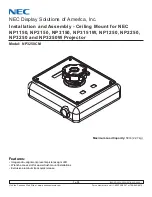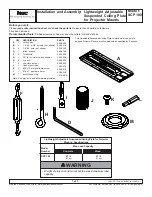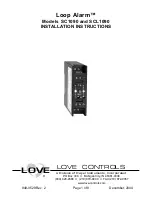
Developer’s Manual
January, 2004
121
Intel XScale® Core
Developer’s Manual
Software Debug
Software Debug
9
This chapter describes the software debug and related features implemented in Elkhart, namely:
•
debug modes, registers and exceptions.
•
a serial debug communication link via the JTAG interface.
•
a trace buffer.
•
a mechanism and process for loading the instruction cache through JTAG.
9.1
Definitions
debug handler:
Debug handler is the event handler that runs on Elkhart, when a debug event
occurs.
debugger:
The debugger is software that runs on a host system outside of Elkhart.
9.2
Debug Registers
CP15 Registers
CRn = 14; CRm = 8: instruction breakpoint register 0 (IBCR0)
CRn = 14; CRm = 9: instruction breakpoint register 1 (IBCR1)
CRn = 14; CRm = 0: data breakpoint register 0 (DBR0)
CRn = 14; CRm = 3: data breakpoint register 1 (DBR1)
CRn = 14; CRm = 4: data breakpoint control register (DBCON)
CP15 registers are accessible using MRC and MCR. CRn and CRm specify the register to access.
The opcode_1 and opcode_2 fields are not used and should be set to 0.
CP14 Registers
CRn = 8; CRm = 0: TX Register (TX)
CRn = 9; CRm = 0: RX Register (RX)
CRn = 10; CRm = 0: Debug Control and Status Register (DCSR)
CRn = 11; CRm = 0: Trace Buffer Register (TBREG)
CRn = 12; CRm = 0: Checkpoint Register 0 (CHKPT0)
CRn = 13; CRm = 0: Checkpoint Register 1 (CHKPT1)
CRn = 14; CRm = 0: TXRX Control Register (TXRXCTRL)
CP14 registers are accessible using MRC, MCR, LDC and STC (CDP to any CP14 registers will
cause an undefined instruction trap). CRn and CRm specify the register to access. The opcode_1
and opcode_2 fields are not used and should be set to 0.
Software access to all debug registers must be done from a privileged mode. User mode access will
generate an undefined instruction exception. Specifying registers which do not exist has
unpredictable results.
The TX and RX registers, certain bits in the TXRXCTRL register, and certain bits in the DCSR can
be accessed by a debugger through the JTAG interface.
















































